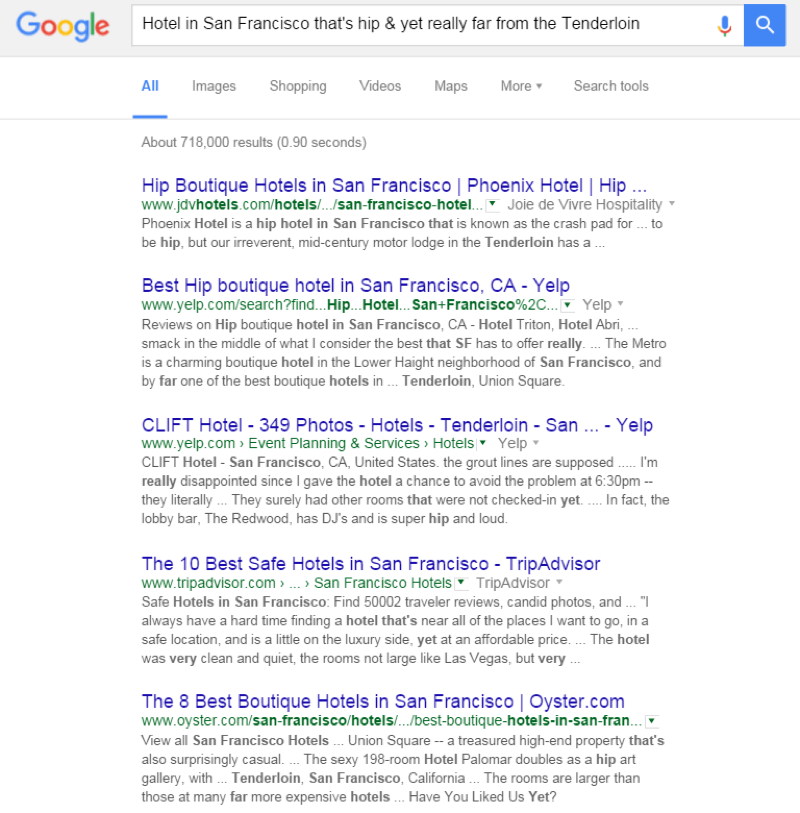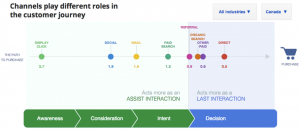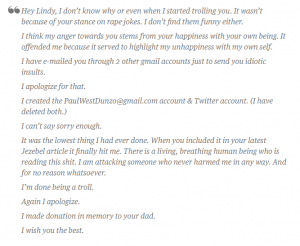Keep calm and carry on with your PPC campaigns despite recent changes in the SERP layout, urges columnist Kevin Ryan.

Did you hear the news? Google is changing the way search ads will appear in results pages. As Search Engine Land reported, most of the search ads appearing in the right rail will be going away or changing.
Any change in how search ads appear will have an effect on performance, but there’s no reason to panic.
1. If You Don’t Like It, Wait 5 Minutes And It’ll Change
Search results change all the time. This particular change has been in the works for awhile, and it’s likely (if you are already managing search campaigns) you have begun to see the changes take effect in major categories.
If you haven’t been structuring ads to include third-party reviews and site links, now would be a good time to get started. While Google may include three or four ads the top of the page, the main body of a search result already includes the additional links.
These additions can effectively multiply a single search ad by a factor of four or five. What this means is that we won’t be seeing four ads in the main body of search, we will see nearly 20. There are all kinds of informational and commercial tidbits to provide in any given search result, and this is nothing new.

The right rail of search ads has long been decaying, like an old building crying out for a teardown.
That page real estate is far better suited to a map with geolistings for restaurants near me, an information box that illustrates a composite view of current movies or news showing which candidate is ahead in the polls that night.

The possibilities are endless. Embrace the changes as they come.
2. Don’t Fear The Searcher (Maybe Just Take Their Hand)
Don’t think of this as losing the right rail; think of it as gaining a more efficient ad experience. The lack of clutter and Google’s uncanny ability to match intent with results and an efficient ad-buying interface are the key to Google’s past and continued success.
Time and time again, research (of all shapes and sizes) has indicated that searchers either don’t realize or couldn’t care less whether there are ads on the page. Strict relevancy guidelines that restrict advertisers’ abilities to buy an ad for any given query continue to hold the advertisers accountable for making ads useful.
Expanding search ad positioning and page real estate will reduce the impact of organic listings in high-volume commercial searches (e.g., Hotels, Restaurants, Star Wars), but it will also allow advertisers to more efficiently connect searchers with exactly the information they seek.

The right rail ads will no longer serve as a distraction from more effective ad extensions and site links.
As an advertiser, you will be able to use this change to enhance your relationship with those seeking what you offer.
3. Embrace The Intent, Embrace The Audience
The media-buying model for search has been upside-down for a long time. This phenomenon is great for advertisers and less so for Google. This change represents Google taking another step toward fixing that problem.
Highly targeted terms with low volume are cheap. Loosely targeted terms with high volume are competitive and expensive. The highly commercial keyword, “Hotel,” for example, is expensive compared to the key phrase, “Hotel in California near Sausalito.” The cheaper low-volume term is paradoxically closer to a desired action than the more expensive broader term.

When buying media, targeted ads are more expensive than more loosely targeted placements. As Google narrows the framework surrounding its search ad placement taxonomy, it tightens up its approach to placement and matching intent with audience. Less ad waste equals a more efficient and relevant experience for advertisers and searchers alike.

All things considered, this is a positive move and will no doubt lead to more opportunities for advertisers and Google.
So if you are holding some Google stock, continue to sit back and count your money. If you are a Google advertiser, do what you have always done: monitor the changes closely, use them to your advantage and understand that change is a constant. Above all, don’t panic.
[Article on Search Engine Land.]
Some opinions expressed in this article may be those of a guest author and not necessarily Marketing Land. Staff authors are listed here.
(Some images used under license from Shutterstock.com.)
Marketing Land – Internet Marketing News, Strategies & Tips
(54)
Report Post








